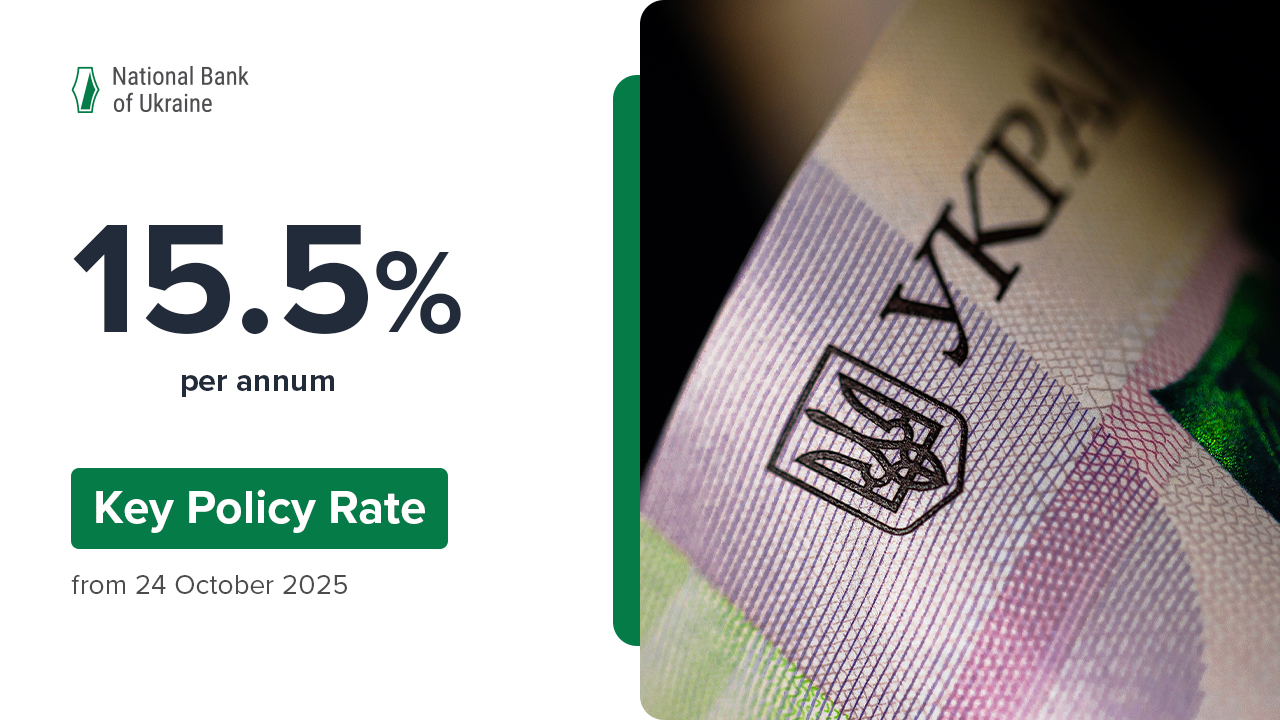In September 2020, consumer inflation slowed to 2.3% yoy (down from 2.5% in August). In monthly terms, prices increased by 0.5%. This is according to data compiled by the State Statistics Service of Ukraine.
Consumer inflation was below the 5% ± 1 pp target range and remained lower than had been forecast in the July 2020 Inflation Report. The deviation from the forecast trajectory was primarily due to the slowdown in food price growth.
- Core inflation slowed slightly (to 3.1% yoy), almost matching the trajectory of the NBU’s forecast. On the one hand, the dynamics of prices for food, clothing, and footwear remained weaker than expected. On the other hand, prices for most nonfood items grew faster in response to the recovery in consumer demand and the weakening of the hryvnia.
Food prices rose slightly more slowly (by 3.0% yoy). Price growth for most dairy and meat products, fish products, and confectionery products decelerated. This was due to both a significant supply, including imports, and a general weakening of demand for goods in the higher price categories.
The growth in services prices also decelerated (to 7.8% yoy). The tightening of quarantine restrictions in some regions held back price increases for catering services, hotel rooms, sport facility services, beauty salon services, foreign language lessons, and housing rent. However, the same factor spurred the growth in prices for healthcare services. Telecommunication services and higher education also became more expensive. This was probably driven by the introduction of indicative prices for educational services in certain fields of study.
Nonfood prices returned to growth (0.1% yoy). The growth in prices for cars, medicines, and other medical goods accelerated, fueled by stronger demand and a weaker hryvnia. The rate of decline in prices for durable goods – household appliances and electronic devices – also decreased. Meanwhile, prices for clothing and footwear actually decreased at a quicker pace. This can be attributed to the availability of previously accumulated stocks of these products and relatively weak demand for them as people continued to self-quarantine by working and studying remotely.
- Raw food prices renewed their decline (down 1.1% yoy). Potato prices continued to fall thanks to a larger harvest of that crop. Other newly harvested vegetables were in shorter supply than last year, but because of their poorer quality and thus lower shelf life, farmers rushed to sell them. With buyers unwilling to store large quantities of these perishable products, this led to a temporary glut of these foods in the market. Higher supply and warm weather in September also significantly slowed the rise in prices for fruits, including apples and watermelons. Increased imports of bananas contributed to a further decline in their prices. The growth in prices for meat and dairy products decelerated.
- The increase in administered prices accelerated (to 6.0% yoy). As global energy prices rose, domestic natural gas prices also returned to year-on-year growth. In addition, tobacco products continued to grow in price.
- The fall in fuel prices decelerated somewhat (to 17.4% yoy). The September drop in global oil prices was wiped out by strong demand for fuel, as individuals increasingly chose driving over other types of transport in pandemic conditions, and by a weaker hryvnia.
Consumer inflation stands below the 5% ± 1 pp target range. Inflation is being held back by food supply factors, some of which are temporary. In contrast, inflationary pressures are being generated by the weakening of the hryvnia, rising energy prices, and the recovery in economic activity and consumer demand.
These drivers of inflation will be taken into account when the NBU revises its macroeconomic forecast. An outline of this forecast will be presented at the NBU Board’s 22 October 2020 press briefing on monetary policy. Full details of the forecast will be published in the Inflation Report scheduled for release on 29 October 2020.








